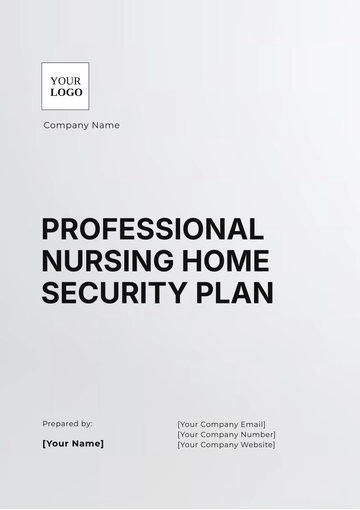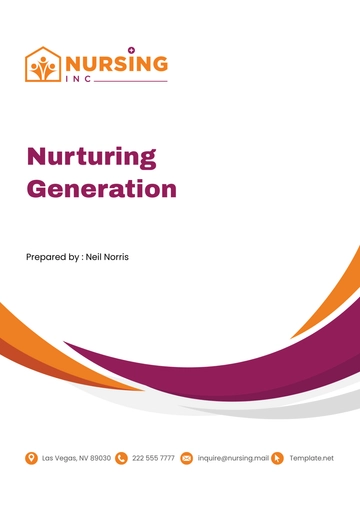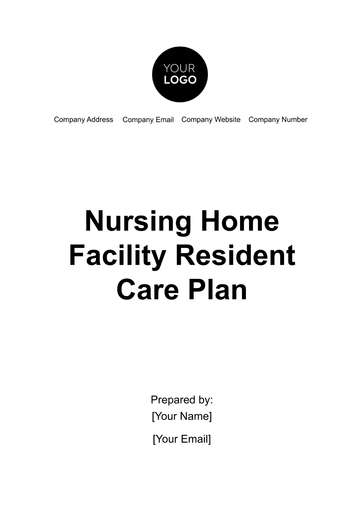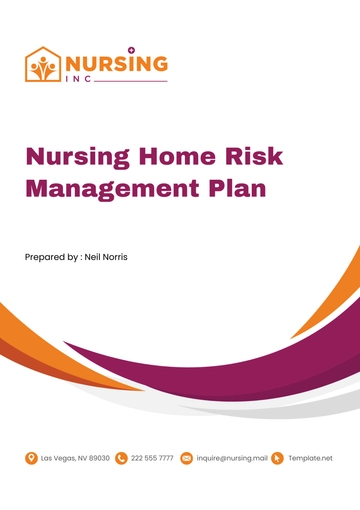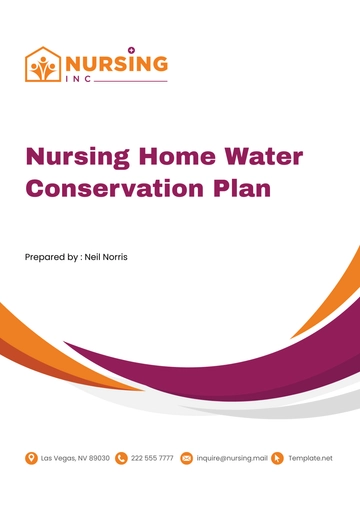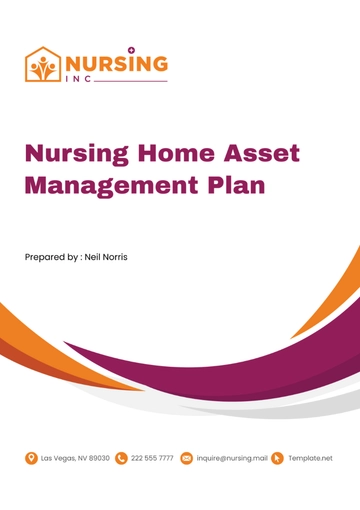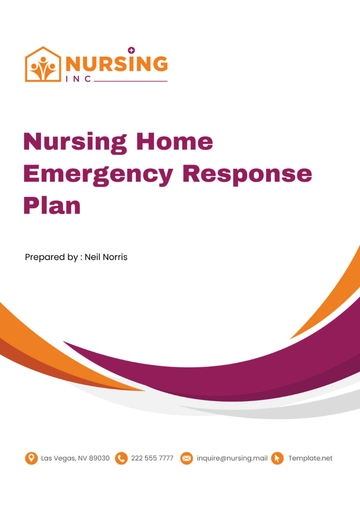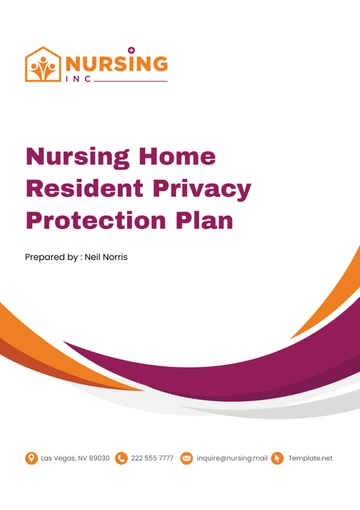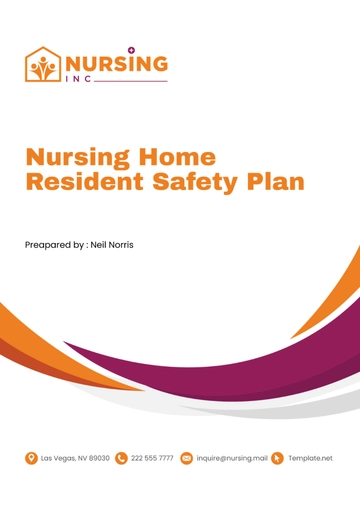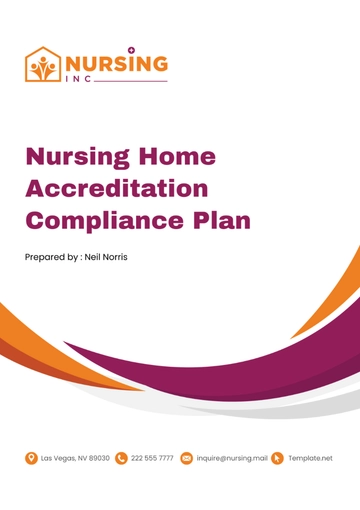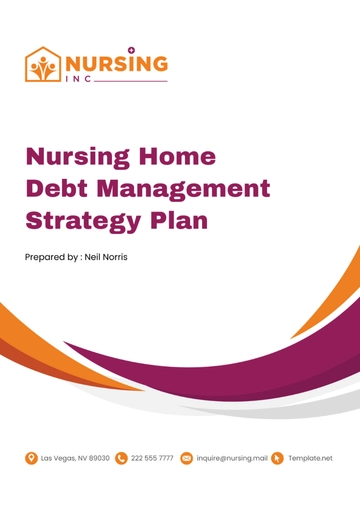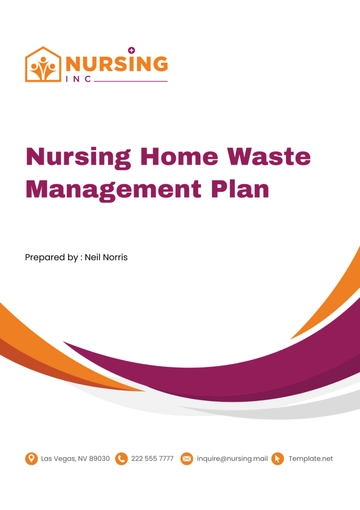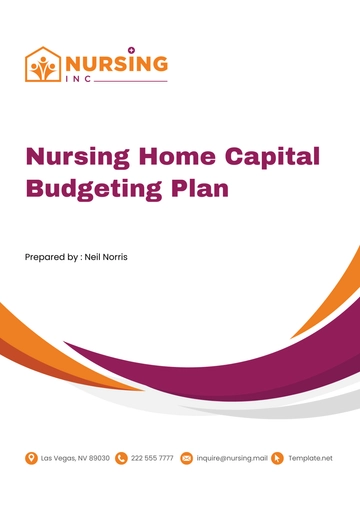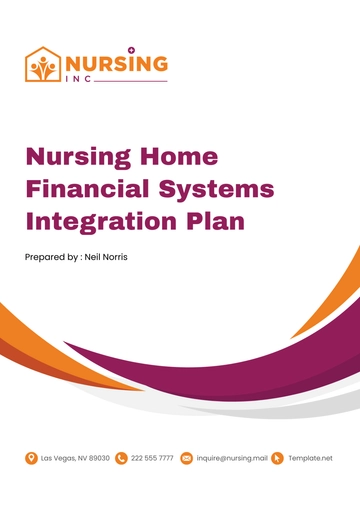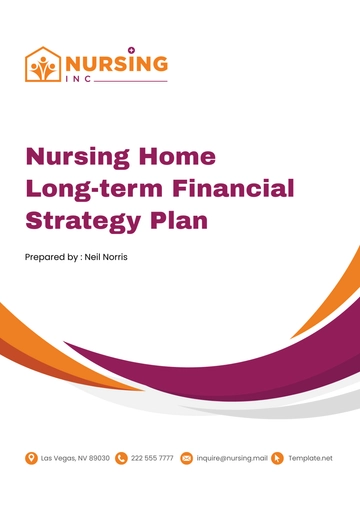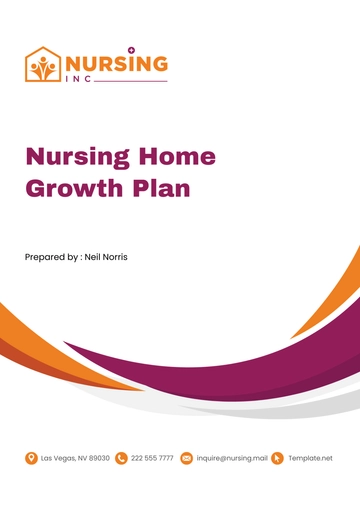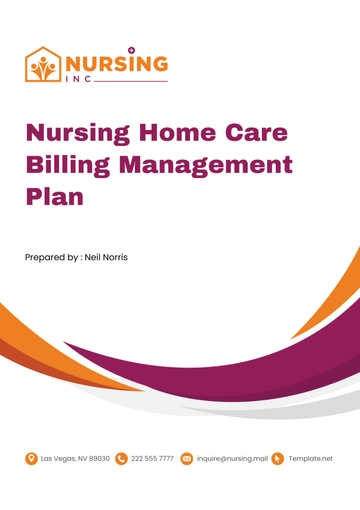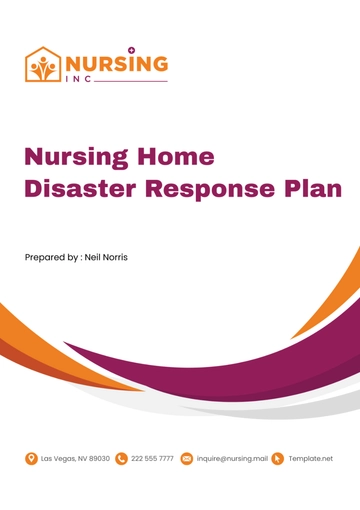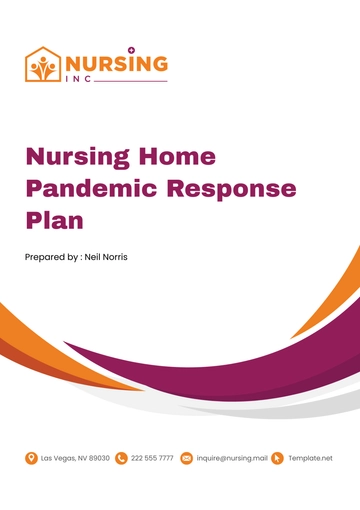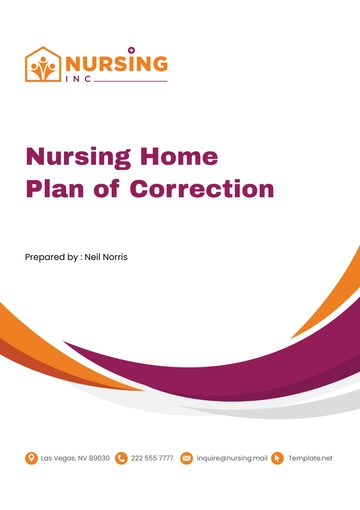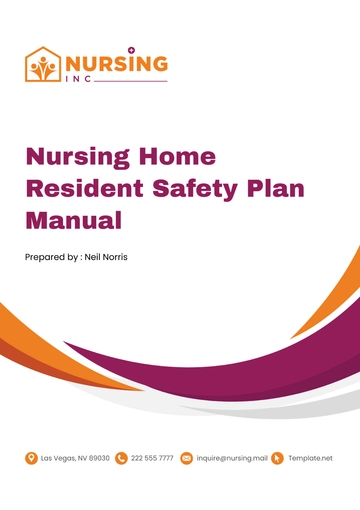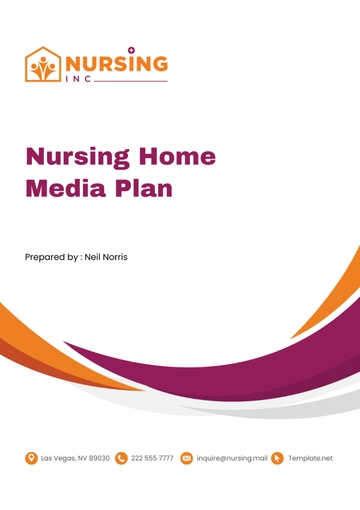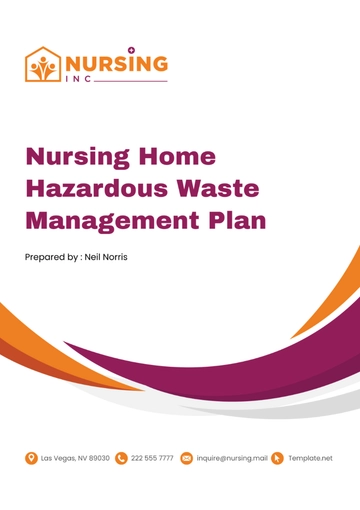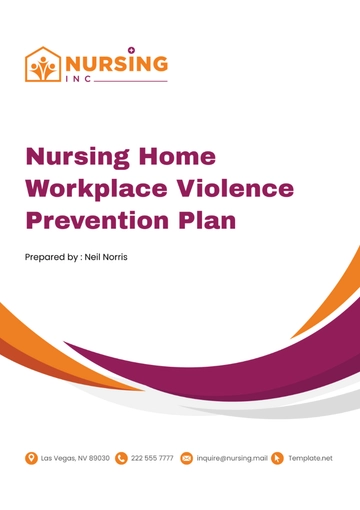Free Professional Nursing Home Security Plan
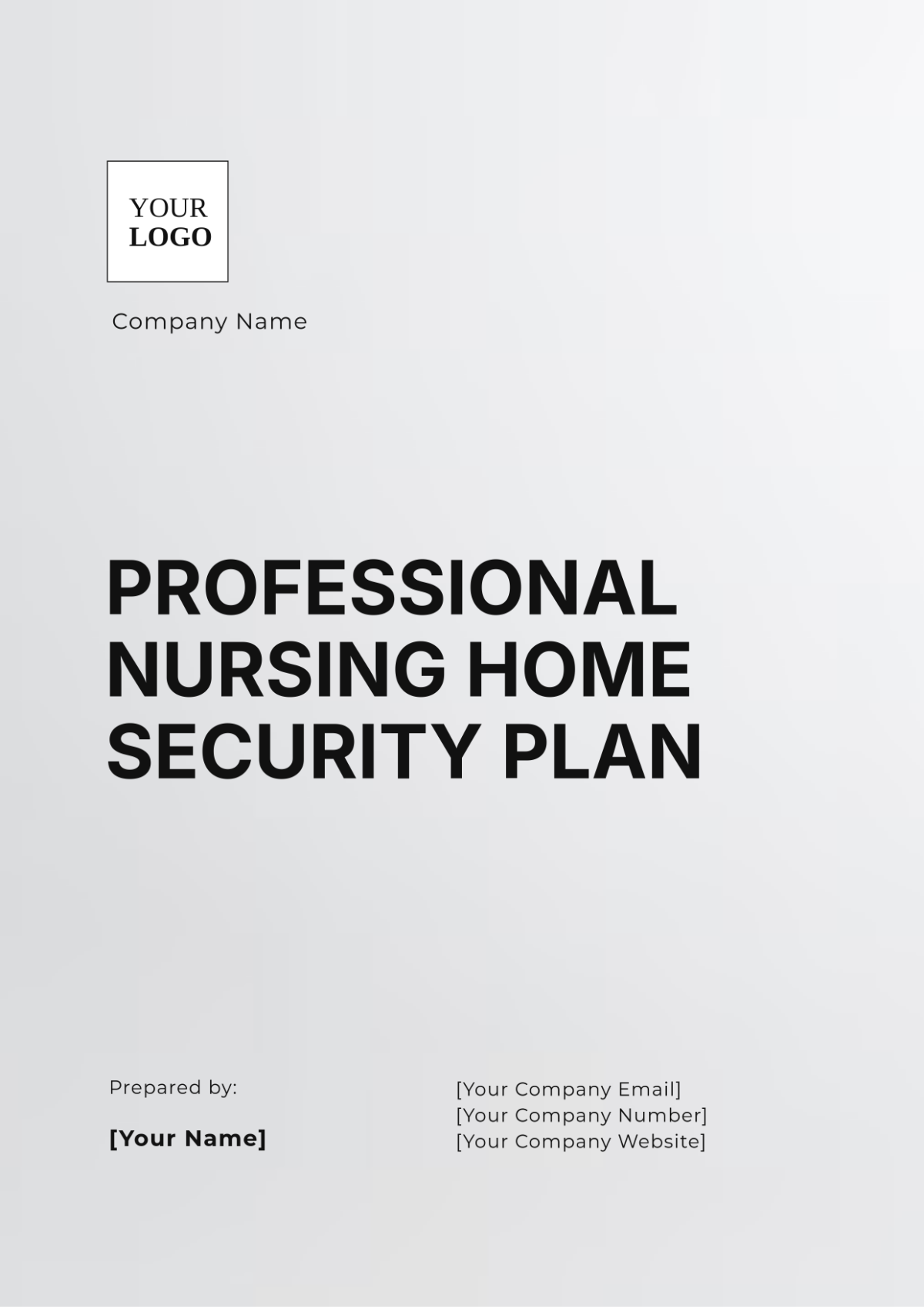
I. Introduction
Ensuring the safety and security of residents, staff, and visitors is a primary concern for nursing home facilities. A comprehensive security plan is vital to protect against potential threats and maintain a safe environment conducive to the well-being of all individuals on the premises. This plan serves as a proactive framework to identify risks, implement effective measures, and establish a culture of safety within the nursing home.
II. Risk Assessment
Conducting a thorough risk assessment is the foundation of an effective security plan. It involves identifying potential threats and vulnerabilities unique to the facility.
1. Identify Potential Threats
Theft and Vandalism: Theft of personal belongings, equipment, and potential vandalism can compromise the security of the facility and the safety of residents.
Unauthorized Access: Individuals gaining unauthorized access can pose risks to the safety and well-being of residents and staff, highlighting the need for stringent access controls.
Resident Elopement: The risk of residents wandering off the premises can lead to dangerous situations, particularly for those with cognitive impairments or medical conditions that require supervision.
Emergency Situations: Natural disasters (e.g., earthquakes, floods) and man-made emergencies (e.g., active shooter situations, terrorism) require well-defined response protocols to protect lives.
2. Vulnerability Analysis
Evaluate facility vulnerabilities in terms of:
Entry Points: Assess all entry and exit points for security weaknesses, including doors, windows, and service entrances.
Staffing Levels: Analyze current staffing levels, particularly during peak visiting hours or shifts, to ensure adequate coverage.
Current Security Measures: Review existing security measures and their effectiveness in addressing identified threats.
III. Security Measures
Implementing appropriate security measures tailored to the identified risks is essential for ensuring a safe environment.
1. Access Control
Key Card or Biometric Entry Systems: Install advanced access control systems that allow only authorized personnel to enter sensitive areas, ensuring a robust barrier against unauthorized access.
Visitor Logbook: Maintain an electronic or physical logbook to track all visitors, including purpose, time of entry, and departure. This can aid in monitoring suspicious activities.
Staff Identification Badges: Ensure all staff wear clearly visible identification badges to promote accountability and easy identification.
2. Surveillance
Enhance monitoring capabilities with modern surveillance systems to deter and detect incidents.
CCTV Cameras: Strategically position high-resolution cameras in critical areas such as entrances, hallways, common areas, and outdoor spaces to ensure comprehensive coverage and monitoring.
Alarm Systems: Implement alarm systems linked to local emergency services to facilitate rapid responses to incidents such as unauthorized access or emergencies.
3. Personnel Training
Regular training programs should be established to keep staff prepared and knowledgeable about security protocols.
Emergency Response Training: Conduct regular drills for various emergencies, including fire, active shooter scenarios, and medical emergencies, ensuring staff are familiar with procedures and roles.
Conflict Resolution Skills: Train staff in de-escalation techniques to handle conflicts effectively, minimizing the risk of violent incidents.
Routine Drills and Exercises: Schedule routine safety drills to evaluate response efficiency and reinforce staff preparedness.
IV. Emergency Response Plan
Developing detailed procedures for various emergency scenarios ensures a swift and organized response.
1. Fire Safety
Outline comprehensive evacuation plans, including designated exit routes, assembly points, and roles for staff to ensure all residents are safely evacuated.
2. Medical Emergencies
Establish procedures for quickly addressing potential medical crises, including protocols for calling emergency services and providing first aid.
3. Disaster Preparedness
Create contingency plans for natural and man-made disasters, ensuring staff are trained in emergency protocols and that residents' needs are prioritized during such events.
V. Regular Review and Improvement
Periodic review and updates to the security plan help address new challenges and improve effectiveness.
Annual Risk Reassessment: Conduct comprehensive assessments annually to identify emerging threats and vulnerabilities.
Feedback from Staff and Residents: Implement a feedback mechanism to gather input from staff and residents regarding security measures, enhance community engagement, and address concerns.
Incorporate New Technologies and Practices: Stay informed about advancements in security technology and best practices to continually enhance the security plan.
VI. Conclusion
Maintaining a secure environment in a nursing home requires a well-thought-out and dynamic security plan that incorporates regular assessments, comprehensive measures, and continuous improvement. By fostering a culture of safety and vigilance, nursing home facilities can ensure the well-being of residents, staff, and visitors alike, ultimately enhancing the quality of care and service provided within the facility.
- 100% Customizable, free editor
- Access 1 Million+ Templates, photo’s & graphics
- Download or share as a template
- Click and replace photos, graphics, text, backgrounds
- Resize, crop, AI write & more
- Access advanced editor
Enhance the safety and security of your nursing home with our Professional Nursing Home Security Plan Template. This customizable template is designed for easy adaptation to meet your facility's specific needs. Downloadable and printable, it ensures a seamless implementation process. Plus, it's editable in our AI Editor Tool, allowing for effortless adjustments and updates.
You may also like
- Finance Plan
- Construction Plan
- Sales Plan
- Development Plan
- Career Plan
- Budget Plan
- HR Plan
- Education Plan
- Transition Plan
- Work Plan
- Training Plan
- Communication Plan
- Operation Plan
- Health And Safety Plan
- Strategy Plan
- Professional Development Plan
- Advertising Plan
- Risk Management Plan
- Restaurant Plan
- School Plan
- Nursing Home Patient Care Plan
- Nursing Care Plan
- Plan Event
- Startup Plan
- Social Media Plan
- Staffing Plan
- Annual Plan
- Content Plan
- Payment Plan
- Implementation Plan
- Hotel Plan
- Workout Plan
- Accounting Plan
- Campaign Plan
- Essay Plan
- 30 60 90 Day Plan
- Research Plan
- Recruitment Plan
- 90 Day Plan
- Quarterly Plan
- Emergency Plan
- 5 Year Plan
- Gym Plan
- Personal Plan
- IT and Software Plan
- Treatment Plan
- Real Estate Plan
- Law Firm Plan
- Healthcare Plan
- Improvement Plan
- Media Plan
- 5 Year Business Plan
- Learning Plan
- Marketing Campaign Plan
- Travel Agency Plan
- Cleaning Services Plan
- Interior Design Plan
- Performance Plan
- PR Plan
- Birth Plan
- Life Plan
- SEO Plan
- Disaster Recovery Plan
- Continuity Plan
- Launch Plan
- Legal Plan
- Behavior Plan
- Performance Improvement Plan
- Salon Plan
- Security Plan
- Security Management Plan
- Employee Development Plan
- Quality Plan
- Service Improvement Plan
- Growth Plan
- Incident Response Plan
- Basketball Plan
- Emergency Action Plan
- Product Launch Plan
- Spa Plan
- Employee Training Plan
- Data Analysis Plan
- Employee Action Plan
- Territory Plan
- Audit Plan
- Classroom Plan
- Activity Plan
- Parenting Plan
- Care Plan
- Project Execution Plan
- Exercise Plan
- Internship Plan
- Software Development Plan
- Continuous Improvement Plan
- Leave Plan
- 90 Day Sales Plan
- Advertising Agency Plan
- Employee Transition Plan
- Smart Action Plan
- Workplace Safety Plan
- Behavior Change Plan
- Contingency Plan
- Continuity of Operations Plan
- Health Plan
- Quality Control Plan
- Self Plan
- Sports Development Plan
- Change Management Plan
- Ecommerce Plan
- Personal Financial Plan
- Process Improvement Plan
- 30-60-90 Day Sales Plan
- Crisis Management Plan
- Engagement Plan
- Execution Plan
- Pandemic Plan
- Quality Assurance Plan
- Service Continuity Plan
- Agile Project Plan
- Fundraising Plan
- Job Transition Plan
- Asset Maintenance Plan
- Maintenance Plan
- Software Test Plan
- Staff Training and Development Plan
- 3 Year Plan
- Brand Activation Plan
- Release Plan
- Resource Plan
- Risk Mitigation Plan
- Teacher Plan
- 30 60 90 Day Plan for New Manager
- Food Safety Plan
- Food Truck Plan
- Hiring Plan
- Quality Management Plan
- Wellness Plan
- Behavior Intervention Plan
- Bonus Plan
- Investment Plan
- Maternity Leave Plan
- Pandemic Response Plan
- Succession Planning
- Coaching Plan
- Configuration Management Plan
- Remote Work Plan
- Self Care Plan
- Teaching Plan
- 100-Day Plan
- HACCP Plan
- Student Plan
- Sustainability Plan
- 30 60 90 Day Plan for Interview
- Access Plan
- Site Specific Safety Plan

